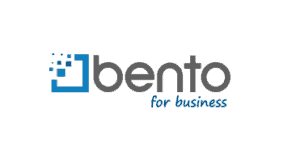What is a procurement card?
As your company grows, you’ll need to share responsibility, especially in the accounting department. In addition to finding trustworthy, intelligent managers who can watch over the shop while you’re busy, you must select competent stakeholders to authorize payments and run procurement card training programs. In other words, you are likely thinking “What is a procurement card?“, or how to institute a procurement card policy that keeps the money moving seamlessly. Here’s how to get a handle on your acquisition practices.
Exploring what a procurement card is
Want to understand what a procurement card is? First, you should understand the concept of procurement. According to the National Association of Purchase Card Professionals procurement is the entire process involved in acquiring services and goods. This broad definition may include activities like researching suppliers, managing inventories, reconciling purchase orders, negotiating deals and requesting transaction proposals.
Procurement cards, also referred to as P or purchase cards, facilitate these activities. Companies can issue individual spending tools to their employees to enable them to buy supplies, such as office materials or raw feedstock. Many firms distribute them for purchasing related goods, such as business meals or fleet vehicle fuel.
What does a P card look like, is it plastic? These tools can be physical, such as regular cards with chips, PINs and security features. They can also consist of virtual, number-only payment methods connected to accounts of your choosing.
Procurement cards are popular with large organizations because they make it easy to responsibly manage and allocate hefty sums of money, such as the trillions spent annually by governments. They can also help firms meet the demands of complex accounting practices. For instance, they let you manage travel expenses more accurately by presenting information in an easily consumed dashboard view.
Who uses procurement cards?
Historically, procurement cards were primarily used by larger companies, government agencies, and municipalities with enough money and purchase order activity to justify custom procurement practices. Today, however, more small businesses rely on procurement debit cards that accommodate startups.
Why do so many kinds of organizations use procurement cards? The success of these payment tools isn’t mere happenstance. P cards simplify common accounting tasks and give business leaders heightened power to manage expenditures situationally. Many also support placing built-in controls on your account for improved oversight and fraud prevention.
How do procurement card programs work?
Procurement card programs are internal, company-driven initiatives designed to manage the disbursement and use of procurement cards. For instance, you might implement a system to ensure that every card you issue to an employee generates a new running accounting record. Your program should also include things like:
- Worker training standards that clarify which kinds of purchases are valid
- Spending reporting and history tracking that let you associate purchasing activity with actual business gains and losses
- Automated systems that intake receipts, purchase orders and transaction record information without needing user intervention
Procurement card policies in practice
Your procurement card policy consists of whichever rules and controls you implement to manage how your staff uses your P cards. Imagine that you issue procurement debit cards to team leaders so that they can fund departmental ad campaigns. You might also lay down the law restricting their buying activity to things like Google or Facebook ads, third-party market research, and promotional materials.
With the right cards, you can also define procurement rules that block such purchases before they even go through. What’s more, you won’t have to reimburse anyone.
Once you’ve set up a policy, it’s critical to teach your people how to follow it. Although the top modern procurement tools help ensure that people adhere to the rules, procurement card training saves time and decreases the likelihood of misunderstandings.
How secure are procurement cards?
Good debit procurement cards are extremely secure. Unlike regular credit cards, they provide you with quick feedback in the form of constant updates. This perk means that you don’t have to let potential fraud go unaddressed simply because the evidence is in some credit card statement that hasn’t found its way through the postal system yet.
Another one of the pros of procurement card transactions is that they employ secure web technologies, such as PCI DSS and SSL. Such advantages stand in stark contrast to traditional procurement credit cards that were easier for fraudsters to steal and use for months before being caught.
Using a procurement card can help reduce the risk of business fraud
One of the cons of traditional procurement card policies is that they depend on trust. For example, if you’re stuck using an employee-filled purchase order to balance your books, you have to rely on the fact that the employee didn’t falsify the information or otherwise attempt to obscure wrongdoing.
Transitioning to a procurement debit system is one smart way for companies to avoid such risks. In addition to keeping business leaders more regularly informed, a procurement debit card can only spend what’s in its linked account.
P cards make employees lives easier
Corporate and government procurement cards are popular because they cut through the procurement process with enhanced efficiency. Instead of submitting receipts and purchase orders, your staff can swipe or use card numbers to make payments.
The accompanying record gets created the instant the purchase occurs, so there’s no need for your worker to mess around with extra paperwork. Since the money comes from the company, life is also much easier at tax time.
The best features procurement cards have to offer
These cards are springing up at startups and countless other organizations that want to define their procurement practices in terms that complement their unique business models. For instance, fleet-operations companies love the fact that they can program their cards to disallow snack purchases at refueling stations or automatically approve certain part and maintenance expenditures. In some cases, churches and other nonprofits use them to sidestep the fraud risks of typical credit card systems.
A readily apparent benefit of procurement card transactions is that they tie into smart data systems. You’re busy running a company — You might not always have time to check in with the accounting department, but thanks to smartphone-based dashboards, you can still stay informed.
What is a procurement card vs. a travel card?
A travel card is a type of procurement card typically restricted to travel and entertainment purchases, such as meals or hotel rooms at trade shows. Also known as corporate cards, these devices are subsets of procurement cards.
Controls
How do procurement debit cards and procurement credit cards stack up against conventional credit cards and debit cards? Each product is different, but as a rule, regular credit cards and debit cards typically lack business-specific features, such as advanced transaction analysis or merchant filtering. With credit cards, you’ll also have to budget for a host of other payments, such as fees and interest.
Virtual and ghost cards
Some procurement cards are ghost, or virtual, cards, meaning that they don’t actually come with physical objects. Instead, you issue numbers to authorized employees to streamline payments without relinquishing security or control.
Procurement debit cards strengthen your accounts payable framework
Purchase cards are easy to use, and they also help you keep the numbers in order. By generating shareable transaction information instantly, they ensure that your decision-making process remains as streamlined as humanly possible. Since you can selectively approve transactions ahead of time, you waste less effort going back and forth.
What to look for when choosing a purchase card provider
From government procurement cards to nonprofit tools, there are many different payment devices out there. The secret to choosing a procurement card lies in picking something with the features your company needs to expand without constraint.
Security is vital, and the best procurement payment tools make it effortless to maintain high standards. A procurement card is capable of many things, but only a few offer the full-featured web apps, native security tools and custom API integrations necessary to free your enterprise from the hassles of the standard acquisition process.
Wondering if a procurement card is what your company needs to sustain its rise to the top? Check out Bento for Business to discover what procurement cards can do. With industry-leading spending controls and delightfully easy recordkeeping, it’s never been simpler to transact without worrying about the unintended consequences.
Stop questioning what an effective P card is supposed to be, and experience the future of payment control. Master your corporate finances by signing up online today or call 866.220.8455to learn more about our free 60-day trial and demo.






